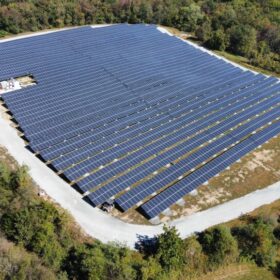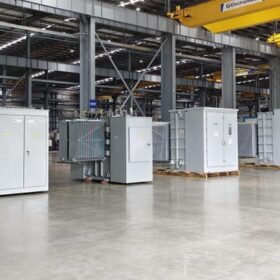Adding a solar system can be a solution to tax woes. Whether mounted on rooftops, the ground, or parking structures, adding solar to a business has become a financial no brainer. That’s why big companies like Wal-Mart, Apple, and Intel are all jumping on board. But cashing in on solar isn’t just for big corporations; businesses of all shapes and sizes are capitalizing on the financial opportunities of going solar.
The recently passed tax reform bill retains the most popular deduction for solar: a 30-percent Federal tax credit. This means that one can deduct 30-percent of the total cost of the system from what they owe in federal taxes. This is a straight tax credit, not based on tax bracket. For example, if one spent $100,000 for a solar system, they will get a $30,000 tax credit. This tax credit can be taken back one year, or carried forward for up to 20 years if one can’t use the entire tax credit in year one.
But what many people don’t realize is that in addition to the federal tax credit, a business can also depreciate the solar system. Solar systems qualify for MACRS depreciation, offering up to 30-percent of the system cost in additional tax savings, depending on the tax bracket.
Additionally, while adding value to a property, installing a solar system does not increase property taxes. Solar systems are exempt from property tax increases as long as they are installed on property one currently owns. If the property is sold in the future, the new owner will be assessed for the increased value.
For commercial property landlords, installing solar gives one the 30-percent federal tax credit, the MACRS depreciation, and adds value to property. Plus, one can sell the solar power generated to tenants at a discounted rate, making them happy while providing an additional revenue stream for 30 plus years. Without a solar system, every dollar sent to PG&E is gone forever.
Solar is a solid investment that includes a 25-year warranty on most solar panels. In those 25 years, it’s very possible that a business could purchase multiple solar systems with all the money it paid out to PG&E.
As an example, let’s say a business spends $1,200/month in PG&E bills. If the rates only increase by an average of 4% per year, it will spend $599,701 over the next 25 years. Or, as an extreme case, let’s say that PG&E rates never go up for the next 25 years. The total spent on PG&E bills still comes to $360,000.
Compare that with spending $100,000 on a solar system getting a $30,000 tax credit and saving another $30,000 in depreciation for a net cost of $40,000.
“Here’s another way of looking at it: If PG&E came and said, ‘pay us for three years of power up front and we’ll give you free power for another 22 years,’ would you do it?”





